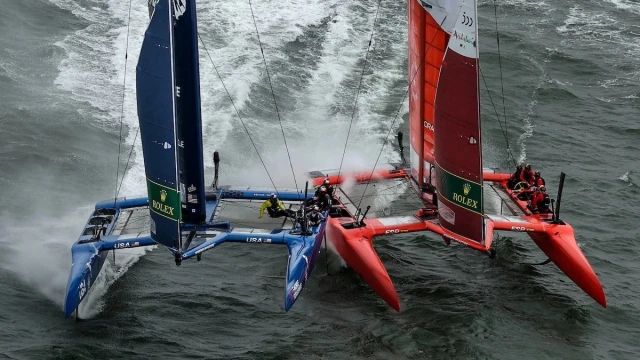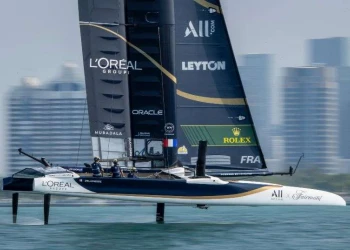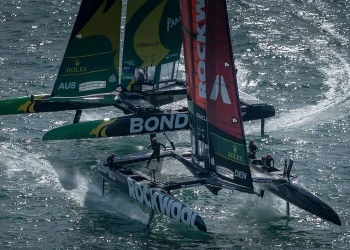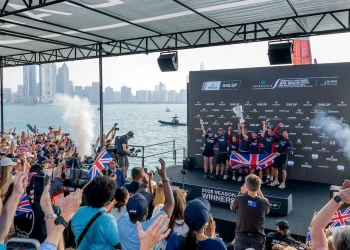
SailGp’s tough new penalty points system for Season 3 explained
SailGp’s tough new penalty points system for Season 3 explained
SailGP’s tough new penalty points system designed to crack down on collisions and crashes on the racecourse has been explained by chief umpire Craig Mitchell.
The harsher penalty policy, which was introduced ahead of Season 3, includes the doubling of penalty points for contact and crashes between rival boats. It comes after a litany of incidents in Season 2 with notable example seeing the British team cause serious damage to one of Japan’s hulls.
The Season 3 changes to the penalty policy follow a previous tightening of the the system in Season 2 after a collision between Japan and the USA in the Bermuda Sail Grand Prix.
“Going into Season 2, we had a pretty robust system which we thought was pretty tough but after the clash between the USA and Japan we did make a few changes to update that,” says Mitchell. One of the key changes was flexibility on the number of penalty points given to the right of way boat. Both Japan and the USA, the latter of which had the right of way, were handed the same amount of penalty points following the collision in Bermuda.
“We weren’t able to reduce that penalty so we changed the rules to give more flexibility while also raising the stakes because we wanted to keep avoiding contact and damage,” Mitchell says.
The umpires also introduced the ability to deduct overall season points if a boat was found to have caused a severe crash. Despite these additional measures, ‘we kept getting these incidents as the season wore on,’ Mitchell says. “Around the middle of the season we had a conversation with the teams and told them they needed to stop,” he says.

After the San Francisco Season 2 event, in which the Spanish boat collided with the USA, it was decided the rules would need to be tightened even further. Penalty points have now been effectively doubled, meaning that one incident involving ‘big damage’ could see a team ‘struggling for the season’, Mitchell says.
Alongside the tightened penalty system, technological advances have been made to reduce contact between the boats. An early warning system alarm on the wing screen now sounds if another boat appears in what is essentially the ‘blind spot’ of the boat.
Mitchell hopes these changes will result in greater ‘caution’ on the racecourse. When it comes to the incidents themselves, Mitchell describes them as ‘mostly errors of judgement and awareness of other boats’.
“I don’t think people really understand how hard these boats are to sail,” he says. “The skillset you need to actually sail these boats is massive.”





